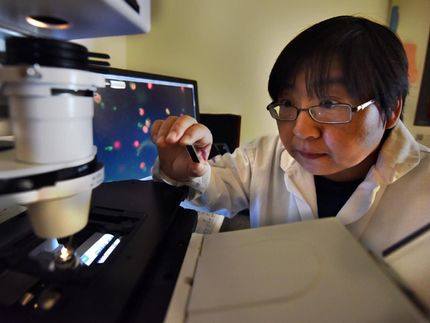Researchers trace effects of genetic defect in myotonic muscular dystrophy
Advertisement
Research on the genetic defect that causes myotonic muscular dystrophy has revealed that the mutation disrupts an array of metabolic pathways in muscle cells through its effects on two key proteins. A study published in Nature Structural & molecular biology shows that the loss of a single protein accounts for most of the molecular abnormalities associated with the disease, while loss of a second protein also seems to play an important role.
Each of the affected proteins interacts with an array of genes that are active in muscle cells and other tissues, said coauthor Manuel Ares, professor of molecular, cell, and developmental biology at the University of California, Santa Cruz. The study reveals a cascading sequence of molecular events in which a mutation in one gene ends up affecting hundreds of other genes and the physiological processes that depend on them.
"This is a genetic disease in which there isn't just one gene that is affected," Ares said. "Our hope is that by chasing down more of the affected genes we might be able to figure out how to address more of the symptoms."
Myotonic dystrophy involves difficulty relaxing muscles (myotonia) and, as in other muscular dystrophies, progressive muscle weakness and wasting. The most common type of myotonic dystrophy (type 1) is caused by changes in a gene that has a repeating sequence of three DNA building blocks. This sequence is repeated five to 35 times in the normal gene, but an excessive number of repeats (50 to 5,000) leads to disease. When the defective gene is transcribed into a messenger RNA molecule, the expanded repeat section causes the RNA to bind tightly to certain proteins, forming clumps within the muscle cells.
"Previous studies have shown that two proteins called Mbnl1 and Mbnl2 are bound up by the repeat RNA and create an aggregate inside the nucleus of the muscle cell," Ares said.
By binding these proteins in clumps, the abnormal RNA prevents them from carrying out their normal functions in the cell. Mbnl1 is involved in a process called RNA splicing, in which the messenger RNA copied from a gene gets "edited" before it can direct the synthesis of proteins.
"When a gene is turned on, its DNA sequence gets copied into a messenger RNA molecule. But that direct copy needs to be processed to make a functional message that can be translated into a protein," Ares said. "Splicing factors like Mbnl1 tell the splicing machinery where to do the cutting and pasting. Without Mbnl1, incorrect splicing can affect lots of different genes."
























































